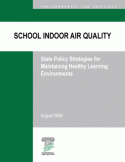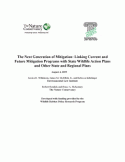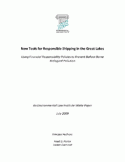
Research Reports
ELI publishes Research Reports available for free download that present the analysis and conclusions of the policy studies ELI undertakes to improve environmental law and policy. These reports contribute to education of the profession and disseminate diverse points of view and opinions to stimulate a robust and creative exchange of ideas. Those publications, which express opinions of the authors and not necessarily those of the Institute, its Board of Directors, or funding organizations, exemplify ELI’s commitment to dialogue with all sectors.
The quality of the air inside our nation’s 125,000 schoolhouses is important not only to the physical health and well-being of students and staff, but also to the core mission of our schools — educational excellence and academic achievement. This report discusses how state policy can ensure that all K-12 schools address basic IAQ issues as part of their ongoing operations and maintenance activities. The report examines leading state policy models and identifies key considerations for developing an effective policy.
Read More >

This report assesses how further development of the Draft TbEIA Framework may be informed by recommended best practices in the field of TbEIA. It also analyzes how the Draft TbEIA Framework relates to the national EIA legislation and/or administrative requirements of the MRC member countries. Section II of this report outlines TbEIA recommended best practices, based on a survey of lessons learned from international, regional, and international financial institution practice.
Read More >
This white paper identifying financial responsibility tools that could be used to protect the Great Lakes economy and environment from biological pollution introduced in ballast water. The white paper introduces the legal framework governing ballast water discharge, discusses liability for discharge of untreated ballast water, and illustrates how financial responsibility mechanisms can be applied to address the potential liabilities and environmental damage arising from ballast water discharge.
Read More >